Abstract
Background: Antioxidants present in plant extracts prevent free radicals from causing chronic diseases in humans.
Aim: The study investigated 12 medicinal plants (Kleinia longiflora DC., Berchemia discolor [Klotzsch] Hemsl., Persea americana Mill., Sansevieria hyacinthoides [L.] Druce, Dichrostachys cinerea [L.] Wright &Arn, Withania somnifera Dunal [Ashgandh], Momordica balsamina L., Lonchocarpus capassa, Pappea capensis, ‘Rhus lancea L. fil’ with ‘Searsia lancea (L.F.) F.A. Barkley’ Peltophorum africanum, Maytenus heterophylla [Eckl. & Zeyh.] Robson) for antioxidant activity using the qualitative and quantitative 1,1-diphenyl-2-picrylhydrazyl (DPPH) assay.
Setting: The plant species were selected from the ethnomedicinal plant database of over 300 medicinal plants used for therapeutic purposes in Limpopo province.
Methods: The plant materials were extracted with solvents of various polarities such as acetone, dichloromethane (DCM), methanol, hexane, and water. The qualitative and quantitative DPPH methods were used to determine the antioxidant activities of plant extracts.
Results: The yellow bands revealed the presence of antioxidant compounds against the purple background on the Thin Layer Chromatography (TLC) plates. Methanol, hexane, and water extracts of L. capassa were the most active radical scavengers in the DPPH assay among the six medicinal plants screened. Plant extracts of P. africanum showed strong antioxidant activity by inhibiting DPPH, compared with the standard ascorbic acid.
Conclusion: The findings indicate that some extracts can be used as an easily accessible source of natural antioxidants.
Contribution: The findings revealed that the plant species investigated displayed noteworthy antioxidant activity, which provides scientific evidence for their utilisation by traditional health practitioners to treat fungal infections.
Keywords: antioxidant activity; antifungal activity; medicinal plants; fungal; inhibitory concentration.
Introduction
Antioxidants are a group of compounds of enormous interest for the biochemists and pharmaceutical industries, and are unknown for their capacity to diminish harm, resulting from some reactive species of oxygen and nitrogen (Ayoub et al. 2017). Antioxidants play an important role in protecting the human body from the damage caused by excessive reactive oxygen species (Aswini, Meimozhi & Murugesan 2018). The presence of antioxidants in plants prevents free radicals from causing diseases like cancer, and cardiovascular disease by inhibiting oxidation at the cellular level (Moonmun, Majumder & Lopamudra 2017). Natural antioxidants are required to cure disorders caused by excessive free radicals (Ahmed, Khan & Saeed 2015). Active antioxidant compounds are flavonoids, flavones, lignans, and iso catechins, which play an important role in the inhibition of free radicals and oxidative chain reactions within tissues and membranes (Boligon, Sagrillo & Machado 2012). Many antioxidant compounds also possess anti-inflammatory, anti-tumour, antimutagenic, anticarcinogenic, antibacterial, antifungal, and antiviral activities (Nazir & Rahman 2018). The body accumulates the free radicals leading to oxidative stress causing diseases in humans such as cancer and cardiovascular disease among others. Natural antioxidants from plants are used as potential scavengers of free radicals in the body and protect the body from diseases and ageing (Mangoale & Afolayan 2020).
The 1,1-diphenyl-2-picrylhydrazyl (DPPH) method is used for measuring the ability of different compounds to act as free radical scavengers, and to evaluate the antioxidant activity of food and beverages. The method is used since it is a rapid, simple, accurate, inexpensive, and convenient method independent of sample polarity for screening many samples for radical scavenging activity. Scavenging activity for free radicals of DPPH has been widely used to evaluate the antioxidant activity of natural products from plant and microbial sources because of its shortness of analysis time compared to other methods (Eruygur et al. 2019).
In this paper, the antioxidant and antifungal activities of selected plant extracts were investigated using serial dilution assay and qualitative and quantitative DPPH assay. In Limpopo province, the database of the antioxidant activity of plant species used to treat various ailments in humans is not well documented. This necessitates the research to focus on the antimicrobial properties of medicinal plants since some of these plants contain antioxidant compounds. Medicinal plants have been used for many centuries in developing countries to treat various infectious diseases in humans (Ahmad et al. 2012). These plants contain bioactive compounds that possess antimicrobial properties. The use of plant natural products to search for active compounds serves as a major source for finding different therapeutic agents (Morais-Braga et al. 2017). Furthermore, plant-derived compounds are employed in modern medicine, since they play an important role in the synthesis of some complex molecules (Dutra et al. 2016).
Some Western medicine has undesirable side effects, but their advantage is their efficacy. Nevertheless, medicinal plants are believed to be safe to use, and comparatively easily available and inexpensive (Kutawa, Danladi & Haruna 2018). In addition, many plant extracts have antifungal activity. The biological activity may be because of the presence of the secondary metabolites contained therein (Eruygur et al. 2019). Moreover, plant extracts that possess antimicrobial properties can be important in healing various microbial infections (Ahmad et al. 2012).
Research methods and design
Plant selection
Twelve plant species, namely Kleinia longiflora, Persea americana, Sansevieria hyacinthoides, Dichrostachys cinerea, Withania somnifera, Momordica balsamina, Lonchocarpus capassa, Pappea capensis, Sersia lancea, Peltophorum africanum, Maytenus heterophylla, Berchemia discolor were selected from the ethnomedicinal plant database of over 300 medicinal plants used for therapeutic purposes in Limpopo province. The plant species were selected based on the treatment of fungal infections from ethnobotanical data and the availability of the plant material.
Plant collection
The plant species were collected from their natural habitat in Muduluni village, Makhado Local Municipality, Limpopo province 23°4̍ 0̎ South, 29°39̍ 0̎ East (Figure 1). The plants were stored in open mesh orange bags at room temperature of 25°C to ensure efficient drying of the material (Mahlo et al. 2016). Plants were identified using literature and Larry Leach Herbarium at the University of Limpopo. Voucher specimens were prepared and deposited at the Herbarium. Plant materials such as leaves, stems, and bark roots were allowed to dry for 3–5 weeks and ground to a fine powder.
 |
FIGURE 1: Map of the study area showing Vhembe District of Makhado Local Municipality, Limpopo province. |
|
Plant extraction
Three grams each of finely ground plant material were extracted in polyester plastic tubes with 30 mL solvents of various polarities such as acetone, dichloromethane (DCM), methanol, hexane, and water. The tubes were shaken vigorously for 10 min on a shaking machine at a high speed of 3500 rpm. After centrifuging at 3500 rpm for 10 min, the extracts were filtered into pre-weighed labelled glass vials. The solvents were removed under a stream of cold air at room temperature. Crude extracts were re-dissolved in acetone prior to phytochemical analysis and biological assays. A freeze dryer was used to remove water from aqueous extracts.
Phytochemical analysis
Aluminium-backed Thin Layer Chromatography (TLC) plates were used to analyse the chemical constituents of each plant extract. Ten microliters of each sample were loaded on TLC plates, and were developed in three different eluent solvent systems – Ethyl acetate: methanol: water (EMW), Chloroform: ethyl acetate: formic acid (CEF), and Benzene: ethanol: ammonia hydroxide (BEA) (Kotze & Eloff 2002). Chemical components were visualised under visible and ultraviolet (UV) light (254 nm and 360 nm, Camac Universal UV lamp TL-600). Vanillin-sulphuric acid spray reagent (Stahl 1969) was used for the detection of chemical compounds not visible under UV light.
Fungal strains and inoculum quantification
Candid albicans (ATCC 10231), and clinical isolates such as Cryptococcus neoformans (ATCC-MYA-4567) and Aspergillus fumigatus (ATCC 46645) were obtained from the Department of Veterinary Tropical Diseases at the University of Pretoria. The haemocytometer cell-counting method described by Aberkane et al. (2002) was used for counting the number of cells for each fungal culture. The sabouraud dextrose (SD) agar slants were used to grow the fungus for seven days at 35°C to prepare the inoculum of each isolate. Appropriate dilutions were made to determine the number of cells by microscopic enumeration using a haemocytometer (Neubauer chamber; Merck S.A). The final inoculum concentration was adjusted to approximately 1.0 × 106 cells/mL.
Micro-dilution assay with some modifications was used to determine the antifungal activity of plant extracts (Masoko, Picard & Eloff 2005). The plant extracts (100 μL) were serially diluted 50% with water in 96 well microtiter plates (Masoko et al. 2005), and 100 μL of fungal culture was added to each well. Amphotericin B was used as the positive control and 100% acetone as the negative control. As an indicator of growth, 40 μL of 0.2 mg/mL p-iodonitrotetrazolium violet (INT) dissolved in water was added to the microplate wells. The microplates were covered and incubated for three to five days at 35 °C at 100% relative humidity after sealing in a plastic bag to minimise fungal contamination in the laboratory. The minimum inhibitory concentrations (MIC) values were recorded as the lowest concentration of the extract that inhibited antifungal growth.
Determining antioxidant activity
Qualitative 1,1-diphenyl-2-picrylhydrazyl free radical scavenging assay
The qualitative DPPH method was used to determine the antioxidant activities of plant extracts (Aderogba et al. 2012). Ten microliters of each plant extract were loaded on TLC plates and developed using different eluent solvent systems: CEF, BEA, and EMW. The prepared TLC chromatograms were visualised under UV light and the compounds were identified. The TLC chromatograms were sprayed with a solution of 0.2% DPPH in methanol and dried in a fume cupboard. The presence of antioxidant compounds was indicated by yellow bands against the purple background.
Quantitative 1,1-diphenyl-2-picrylhydrazyl free radical scavenging assay
The antioxidant activity of the plant extracts was evaluated using the free radical-scavenging method (DPPH) as described by Ammar et al. (2009). Various concentrations of plant extracts prepared in methanol were added to 1 ml of methanolic solution of 0.2 mmol/L DPPH and kept in the dark at room temperature for 30 min. Methanol was used as a blank and was prepared in the same manner as the plant extracts. L-ascorbic acid (vitamin C) was used as a standard in the quantification of antioxidant activity and was prepared in the same concentration range as the plant extracts. The absorbance of the resulting mixture was measured using a spectrophotometer against a blank at 517 nm.
Data analysis
Descriptive and inferential statistics such as graphs, percentages and frequencies were used to analyse the data. The percentage of antioxidant activity of both the plant species and the ascorbic acid was calculated using the following formula:
Where: Ab = absorbance of the blank and Ac = absorbance of the samples.
The concentration-response graph was obtained by plotting inhibition percentages versus concentrations. The DPPH radical-scavenging activity was expressed in terms of IC50 (mg /mL) (Jemaa et al. 2007).
Ethical considerations
The study was approved by the University of Limpopo Research Committee (TREC/115/2020).
Results and discussion
Micro-dilution assay
The antifungal activity of the plant crude extracts was investigated using the MIC values of the plant extract against C. albicans, C. neoformans and A. fumigatus. The plant extracts were tested in triplicate in each assay, and the assays were repeated in their entirety to confirm the results. Residues of different extracts were dissolved in acetone to a concentration of 10 mg/mL. The antimicrobial activity of the plant extracts has been classified as good (MIC < 0.1 mg/mL), moderate (0.1 ≤ MIC ≤ 0.32 mg/mL) and weak activity (MIC > 0.32 mg/mL) (Eloff 2021). Acetone leaf extracts of B. discolor had very good activity against C. albicans and A. fumigatus with an MIC value of 0.08 mg/mL (Table 1). The leaf extracts of B. discolor were active against C. albicans, C. neoformans and C. krusei (Samie et al. 2010). Despite its activity against fungal pathogens, it was found that the fruit pulp extracts of B. discolor showed the highest inhibition activities against the tested microorganisms with a MIC value of 6.3 mg/mL (Tshikalange, Modishane & Tabit 2017). Noteworthy antifungal activity was observed in acetone, DCM, hexane, and methanol root extracts of D. cinerea against the three tested microorganisms with MIC values ranging between 0.02 mg/mL and 0.04 mg/mL. However, the water extracts had weak activity against C. albicans and A. fumigatus with MIC values of 2.5 mg/mL and 1.25 mg/mL, respectively. The acetone and DCM of D. cinerea pods had average MIC values of 0 mg/mL – 16 mg/mL against C. albicans. The excellent activity was observed in acetone and DCM extracts against C. neoformans and A. fumigatus with MIC values of 0.02 mg/mL and 0.08 mg/mL.
| TABLE 1a: Minimum inhibitory concentration values of the selected plant species against the three tested microorganisms. The results are the mean of three replicates and the standard deviation was zero. |
| TABLE 1b: Minimum inhibitory concentration values of the selected plant species against the three tested microorganisms. The results are the mean of three replicates and the standard deviation was zero. |
| TABLE 1c: Minimum inhibitory concentration values of the selected plant species against the three tested microorganisms. The results are the mean of three replicates and the standard deviation was zero. |
| TABLE 1d: Minimum inhibitory concentration values of the selected plant species against the three tested microorganisms. The results are the mean of three replicates and the standard deviation was zero. |
| TABLE 1e: Minimum inhibitory concentration values of the selected plant species against the three tested microorganisms. The results are the mean of three replicates and the standard deviation was zero. |
The methanol and aqueous extracts of D. cinerea had good activity against C. albicans. Methanol extracts of M. balsamina showed weak activity against the fungal pathogens tested with MIC values ranging between 0.32 mg/mL and 0.63 mg/mL. Moderate antifungal activity was observed in DCM extracts of M. heterophylla against C. albicans and A. fumigatus with MIC value of 0.31 mg/mL. Hexane and methanol extracts of M. heterophylla were active against A. fumigatus. Plant extracts of K. longiflora possess strong activity against C. neoformans and A. fumigatus with MIC values ranging between 0.02 mg/mL and 0.08 mg/mL (Table 1). The stem-leaf extracts of K. longiflora exhibited some degree of antifungal potency against the Candida species. However, moderate activity was reported against Shigella species with MIC value of 0.1 mg/mL (Asong et al. 2019). All the extracts including the aqueous leaf extracts of P. americana showed weak activity against C. neoformans with MIC values of 0.63 mg/mL and 1.25 mg/mL. Very good antifungal activity was observed in all extracts of P. americana seeds against A. fumigatus with MIC ranging between 0.02 mg/mL and 0.08 mg/mL. The leaf extracts of P. americana were reported to have fungistatic activity against C. albicans and C. tropicalis (Ajayi et al. 2017). Moderate activity was observed in acetone, hexane, DCM, and methanol extracts of P. americana seeds against C. neoformans with MIC value of 0.31 mg/mL. The aqueous extracts of P. americana seeds showed weak activity against C. albicans and C. neoformans with MIC values of 0.63 mg/mL and 2.5 mg/mL.
Plant extracts with low MIC values could be a good source of potentially bioactive compounds with antimicrobial strength. The lower the MIC value, the better the activity of plant extracts against the tested fungal pathogens. In general, DCM extracts of most plant species showed the best antifungal activity compared to other extracts in the study, which could suggest that the active constituents in most plants tested are more non-polar than polar.
Qualitative 1,1-diphenyl-2-picrylhydrazyl free radical scavenging assay
The antioxidant activity of the plant extracts was carried out using the DPPH method. All plant species showed antioxidant activities represented by the inhibition of DPPH radical scavenging. The presence of antioxidant compounds was detected by yellow spots against the purple background. Of the extracts evaluated, the acetone extracts of S. hyacinthoides displayed more antioxidant compounds (Figure 2). Other researchers reported the best antioxidant activity of non-polar extracts (Adebayo, Shai & Eloff 2019). Acetone and methanol extracts of P. americana had good antioxidant activity (Bertling, Tesfay & Bower 2007). In the qualitative assay, similar results were confirmed with plant extracts exhibiting excellent scavenging activity (Mamabolo, Muganza & Olivier 2017). Furthermore, the phytochemical constituents such as vitamin C, alkaloids, flavonoids, steroids, and triterpenoids present in P. americana fruit can reduce the potential risk of various diseases (Rafique & Akhtar 2018).
 |
FIGURE 2: Thin Layer Chromatography chromatograms of S. hyacinthoides and D. cinerea root extracts developed in Benzene: ethanol: ammonia hydroxide, Chloroform: ethyl acetate: formic acid and Ethyl acetate: methanol: water, Sprayed with 0.2% 1,1-diphenyl-2-picrylhydrazyl in methanol. |
|
In TLC chromatograms separated with CEF, two compounds were observed in the aqueous extracts of K. longiflora. All the plant species evaluated revealed noteworthy antioxidant activity including K. longiflora (Asong et al. 2019). The antioxidant activity of the plant extracts might be attributed to the presence of different secondary metabolites such as terpenoids, alkaloids, saponins, and tannins present in the plant extracts.
Quantitative 1,1-diphenyl-2-picrylhydrazyl free radical scavenging assay
The free radical scavenging activity assay (DPPH) was used to quantify the antioxidant activity of the plant extract. L-ascorbic acid was used as a positive control. Three plant species were selected for quantification since they had shown good antioxidant activity on the qualitative assay. The results are presented in Figure 3 to Figure 5 as the percentage of inhibition. The values used are the mean of triplicates ± standard deviation. Methanol, hexane, and water extracts of L. capassa revealed good antioxidant activity against DPPH by having a high percentage of inhibition compared to other solvents. Dichloromethane extracts of L. capassa had the lowest antioxidant activities with a low percentage of inhibition (12%). The leaf methanol, DCM, and water extracts of S. hyacinthoides exhibited good antioxidant activity. Similarly, the leaf extracts of S. hyacinthoides revealed good activity by exhibiting over 80% DPPH activity (Figure 4).
 |
FIGURE 3: Percentage inhibition antioxidant activity of L. capassa crude extracts; L-Ascorbic acid was used as a positive control. |
|
 |
FIGURE 4: Percentage inhibition antioxidant activity of S. hyacinthoides crude extracts; L-Ascorbic acid (Vitamin C) was used as a positive control. |
|
 |
FIGURE 5: Percentage inhibition antioxidant activity of P. africanum crude extracts; L-Ascorbic acid (Vitamin C) was used as a positive control. |
|
Acetone and methanol extracts from the same plant exhibited a high percentage of DPPH scavenging activities (Aliero, Jimoh & Afolayan 2008). Noticeably, all the extracts of P. africanum exhibited strong antioxidant activity against the DPPH, with some extractants having excellent activity than the ascorbic acid (Figure 3). The synergistic effects on the plant extracts may enhance their antioxidant activity. The presence of antioxidant activity in P. africanum might be because of the presence of polyphenols. The root and bark polar extracts have shown high antioxidant activity (Bizimenyere et al. 2005). In addition, acetone, and methanol extracts of P. africanum revealed good antioxidants against DPPH compared to other plant species and ascorbic acid (Masuku, Uniofin & Lebelo 2020). Extracts of P. africanum had the best antioxidant activity in DPPH and ABTS assay with IC50 of 4.67 ± 0.31 and 7.71 ± 0.36 μg/mL, respectively (Adebayo et al. 2015).
Conclusion
All plant extracts revealed some varying degrees of fungal inhibition, with MIC values ranging between 0.02 and 2.5 mg/mL. Some water extracts had shown some activity against the tested microorganisms. The antifungal extracts of the 12 selected medicinal plants support the traditional use of the plants in the treatment of fungal infections. The antifungal activity of the plant extracts indicated in most plant species indicates that the plant can be used to treat fungal infections. Based on the results, it is suggested that these plants could be used as a new potential source of antifungal agents.
Most plant species investigated displayed noteworthy antioxidant activity, which provides scientific evidence for their utilisation by traditional health practitioners to treat diseases possibly including fungal infections. As a result, plant species with antioxidant compounds could be used with a wider potential use than only for antifungal drugs. The antioxidant presence in plant species investigated in this study means that there is a possible synergism. Strong antioxidant compounds were detected in some plant extracts developed in BEA, suggesting that antioxidant compounds can be isolated based on the polarity of the solvents. Plant extracts of P. africanum showed strong antioxidant activity by inhibiting DPPH, compared with the standard ascorbic acid. The results from this study show that the extract can be used as an easily accessible source of natural antioxidants.
Acknowledgements
The authors acknowledge National Research Foundation for financial support. The authors are grateful to the traditional health practitioners and local people who participated in this project. Sections of this manuscript (24%) are published in a thesis submitted in partial fulfilment of the requirements for the degree of PhD and Masters in the University of Limpopo and University of Pretoria entitled ‘Characterization and biological activity of antifungal compounds present in Breonadia salicina (Rubiaceae) leaves’. With supervisor Prof. S Mahl, available https://repository.up.ac.za/bitstream/handle/2263/24873/Complete.pdf?isAllowed=y&sequence=8 and http://ulspace.ul.ac.za/bitstream/handle/10386/4291/machaba_tc_2023.pdf?sequence=1&isAllowed=y.
Competing interests
The authors have declared that no competing interest exists.
Authors’ contributions
T.C.M., S.M. and J.E. designed the study, collected and analysed the data, and drafted the manuscript.
Funding information
The National Research Foundation (NRF) supported this study.
Data availability
The data used to support the findings of this study may be released upon application to the corresponding author, S.M.
Disclaimer
The views and opinions expressed in this article are those of the authors and do not necessarily reflect the official policy or position of any affiliated agency of the authors, and the publisher.
References
Aberkane, A., Cuenca-Estreila, M., Gomez-Lopez, A., Petrikkou, E., Mellado, E., Monzon, A. et al., 2002, ‘Comparative evaluation of two different methods of inoculum preparation for antifungal susceptibility testing of filamentous fungi’, Journal of Antimicrobial Chemotherapy 50(5), 719–722. https://doi.org/10.1093/jac/dkf187
Adebayo, S.A., Shai, L.J. & Eloff, J.N., 2017, ‘First isolation of glutinol and a bioactive fraction with good anti-inflammatory activity from n-hexane fraction of Peltophorum africanum leaf’, Asian Pacific Journal of Tropical Medicine 10(1), 42–46. https://doi.org/10.1016/j.apjtm.2016.12.004
Aderogba, M.A., Kgatle, D.T., McGaw, L.J. & Eloff, J.N., 2012, ‘Isolation of antioxidant constituents from Combretum apiculatum subsp. apiculatum’, South African Journal of Botany 79, 125–131. https://doi.org/10.1016/j.sajb.2011.10.004
Ahmad, N., Amir, M.K., Sultan, A., Shakeel, A., Akber, J., Ashraf, J.S. et al., 2012, ‘Antimicrobial profile of the selected medicinal plants’, International Journal of Chemical and Life Sciences 01(02), 1039–1041.
Ahmed, D., Khan, M.M. & Saeed, R., 2015, ‘Comparative analysis of phenolics, flavonoids and antioxidant and antibacterial potential of methanolic, hexanic and aqueous extracts from Adiantum caudatum leaves’, Antioxidant 4(2), 394–409. https://doi.org/10.3390/antiox4020394
Ajayi, O., Awala, S., Olalekan, O. & Alabi, O., 2017, ‘Evaluation of antimicrobial potency and phytochemical screening of Persea americana leaf extracts against selected bacterial and fungal isolates of clinical importance’, Microbiology Research Journal International 20(1), 1–11. https://doi.org/10.9734/MRJI/2017/24508
Aliero, A.A., Jimoh, F.O. & Afolayan, A.J., 2008, ‘Antioxidant and antibacterial properties of Sansevieria hyacinthoides’, International Journal of Pure and Applied Sciences 2, 103–110.
Ammar, R.B., Bhouri, W., Sghaier, M.B., Boubaker, J., Skandrani, I., Neffati, A. et al., 2009, ‘Antioxidant and free radical-scavenging properties of three flavonoids isolated from the leaves of Rhamnus alaternus L. (Rhamnaceae): A structure- activity relationship study’, Food Chemistry 116(1), 258–264. https://doi.org/10.1016/j.foodchem.2009.02.043
Asong, J.A., Amoo, S.O., McGaw, L.J., Nkadimeng, S.M., Aremu, A.O. & Otang-Mbeng, W., 2019, ‘Antimicrobial activity, antioxidant potential, cytotoxicity and phytochemical profiling of four plants locally used against skin diseases’, Plants 8(9), 350. https://doi.org/10.3390/plants8090350
Aswini, R., Meimozhi, S. & Murugesan, S., 2018, ‘Phytochemical screening, TLC analysis, antibacterial and antioxidant activity of methanol extract of leaf in Ledebouria revolute (L.F) Jessop’, Journal of Pharmaceutical Sciences and Research 10(11), 2762–2767.
Ayoub, Z., Mehta, A., Mishra, S.K. & Ahirwal, L., 2017, ‘Medicinal plants as natural antioxidants: A review’, Journal of Botanical Society, University of Saugor 48, 1–15.
Bertling, I., Tesfay, S. & Bower, J., 2007, ‘Antioxidants in “Hass” avocado’, South African Avocado Growers’ Association Yearbook 30, 17–19.
Bizimenyere, E.S., Swan, G.E., Chikoto, H. & Eloff, J.N., 2005, ‘Rationale for using Peltophorum africanum (Fabaceae) extracts in veterinary medicine’, Journal of the South African Veterinary Association 76(2), 54–58. https://doi.org/10.4102/jsava.v76i2.397
Boligon, A.A., Sagrillo, M.R. & Machado, L.F., 2012, ‘Protective effects of extracts and flavonoids isolated from Scutia buxifolia Reissek against chromosome damage in human lymphocytes exposed to hydrogen peroxide’, Molecules 17(5), 5757–5769. https://doi.org/10.3390/molecules17055757
Dutra, R.C., Campos, M.M., Santos, A.R.S. & Calixto, J.B., 2016. ‘Medicinal plants in Brazil: pharmacological studies, drug discovery, challenges and perspectives’, Pharmacological Research 112, 4–29. https://doi.org/10.1016/j.phrs.2016.01.021
Eloff, J.N., 2021, ‘A proposal towards a rational classification of the antimicrobial activity of acetone tree leaf extracts in a search for new antimicrobials’, Planta Medica 87(10/11), 836–840. https://doi.org/10.1055/a-1482-1410
Eruygur, N., Kocyigit, U.M., Taslimi, P., Atas, M., Tekin, M. & Gulcin, I., 2019, ‘Screening the in vitro antioxidant, antimicrobial, anticholinesterase, antidiabetic activities of endemic Achillea cucullata (Asteraceae) ethanol extract’, South African Journal of Botany 120, 141–145. https://doi.org/10.1016/j.sajb.2018.04.001
Kotze, M. & Eloff, J.N., 2002, ‘Extraction of antibacterial compounds from Combretum microphyllum (Combretaceae)’, South African Journal of Botany 68(1), 62–67. https://doi.org/10.1016/S0254-6299(16)30456-2
Kutawa, A.B., Danladi, M.D. & Haruna, A., 2018, ‘Antifungal activity of garlic (Allium sativum) extract on some selected fungi’, Journal of Medicinal Herbs and Ethnomedicine 4, 12–14. https://doi.org/10.25081/jmhe.2018.v4.3383
Jemaa, H.B., Jemia, A.B., Khlifi, S., Ahmed, H.B., Fethi Ben Slama, F.B., Benzarti, A. et al., 2017, ‘Antioxidant activity and A-amylase inhibitory potential of Rosa canina L’, African Journal of Traditional Complementary and Alternative Medicine 14(2), 1–8. https://doi.org/10.21010/ajtcam.v14i2.1
Machaba, T.C., 2018, ‘Ethnobotanical survey of medicinal plants with antifungal activities in Makhado Local Municipality, Limpopo province, South Africa’, MSc dissertation, University of Limpopo.
Machaba, T.C., 2023, ‘Isolation, characterisation and cytotoxicity of antifungal compounds present in medicinal plants used against Cryptococcus neoformans in Vhembe District, Limpopo province’, PhD thesis, University of Limpopo.
Mangoale, R.M. & Afolayan, A.J., 2020, ‘Comparative phytochemical constituents and antioxidant activity of wild and cultivated Alepidea amatymbica Eckl & Zeyh’, Biomed Research International, 1–13. https://doi.org/10.1155/2020/5808624
Mamabolo, M.P., Muganza, F.M. & Olivier, M.T., 2017, ‘Free radical scavenging and antibacterial activities of Helichrysum caespititium (DC) Harv extracts’, Biology and Medicinal Plants 9, 417. https://doi.org/10.4172/0974-8369.1000417
Mahlo, S.M., Chauke, H.R., McGaw, L. & Eloff, J.N., 2016, ‘Antioxidant and antifungal activity of selected medicinal plant extracts against phytopathogenic fungi’, African Journal of Traditional and Complementary and Alternative Medicines 13(4), 216–222. https://doi.org/10.21010/ajtcam.v13i4.28
Masoko, P., Picard, J. & Eloff, J.N., 2005, ‘Antifungal activities of six South African terminalia species (Combretaceae)’, Journal of Ethnopharmacology 99(2), 301–308. https://doi.org/10.1016/j.jep.2005.01.061
Masuku, N.P., Uniofin, J.O. & Lebelo, S.L., 2020, ‘Phytochemical content, antioxidant activities and androgenic properties of four South African medicinal plants’, Journal of Herbmed Pharmacology 9(3), 245–256.
Moonmun, D., Majumder, R. & Lopamudra, A., 2017, ‘Qualitative phytochemical estimation and evaluation of antioxidant and antibacterial activity of methanol and ethanol extracts of Heliconia rostrata’, Indian Journal of Pharmaceutical Sciences 79(1), 79–90. https://doi.org/10.4172/pharmaceutical-sciences.1000204
Morais-Braga, M.F.B., Carneiro, J.N.P., Machado, A.J.T., Sales, D.L., Dos Santos, A.T.L., Boligan, A.A. et al., 2017, ‘Phenolic composition and medicinal usage of Psidium guajava Linn: antifungal activity or inhibition of virulence?’, Saudi Journal of Biological Science 24, 302–313. https://doi.org/10.1016/j.sjbs.2015.09.028
Nazir, A. & Rahman, H.A., 2018, ‘Secrets of plant: Endophytes’, International Journal of Plant Biology 9, 7810. https://doi.org/10.4081/pb.2018.7810
Rafique, S. & Akhtar, N., 2018, ‘Phytochemical analysis and antioxidant activity of Persia americana and Actinida deliciosa fruit extract by DPPH method’, Biomedical Research 29(12), 2459–2464. https://doi.org/10.4066/biomedicalresearch.29-16-2209
Samie, A., Tambani, T., Harshfield, E., Green, E., Ramalivhana, J.N. & Bessong, P.O., 2010, ‘Antifungal activities of selected Venda medicinal plants against Candida albicans, Candida krusei and Cryptococcus neoformans isolated from South African AIDS patients’, African Journal of Biotechnology 9(20), 2965–2976.
Stahl, E., 1969, ‘Apparatus and general techniques in TLC’, Thin-Layer Chromatography, pp. 52–86, Springer-Verlag, Berlin.
Tshikalange, T.E., Modishane, D.C. & Tabit, F.T., 2017, ‘Antimicrobial, antioxidant and cytotoxicity properties of selected wild edible fruits of traditional medicinal plants’, Journal of Herbs, Spice and Medicinal Plants 23(1), 68–76. https://doi.org/10.1080/10496475.2016.1261387
|

